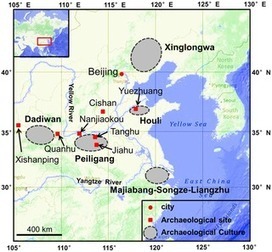The Peiligang Culture (9000-7000 cal. yr BP) in the Middle Yellow River region, North China, has long been considered representative of millet farming. It is still unclear, however, if broomcorn millet or foxtail millet was the first species domesticated during the Peiligang Culture.
Furthermore, it is also unknown whether millet was cultivated singly or together with rice at the same period. In this study, phytolith analysis of samples from the Tanghu archaeological site reveals early crop information in the Middle Yellow River region, China. Our results show that broomcorn millet was the early dry farming species in the Peiligang Culture at 7800 cal. yr BP, while rice cultivation took place from 7800 to 4500 cal. yr BP.
Our data provide new evidence of broomcorn millet and rice mixed farming at 7800 cal. yr BP in the Middle Yellow River region, which has implications for understanding the domestication process of the two crops, and the formation and continuance of the Ancient Yellow River Civilization.
Citation: Zhang J, Lu H, Gu W, Wu N, Zhou K, et al. (2012) Early Mixed Farming of Millet and Rice 7800 Years Ago in the Middle Yellow River Region, China. PLoS ONE 7(12): e52146. doi:10.1371/journal.pone.0052146



 Your new post is loading...
Your new post is loading...








